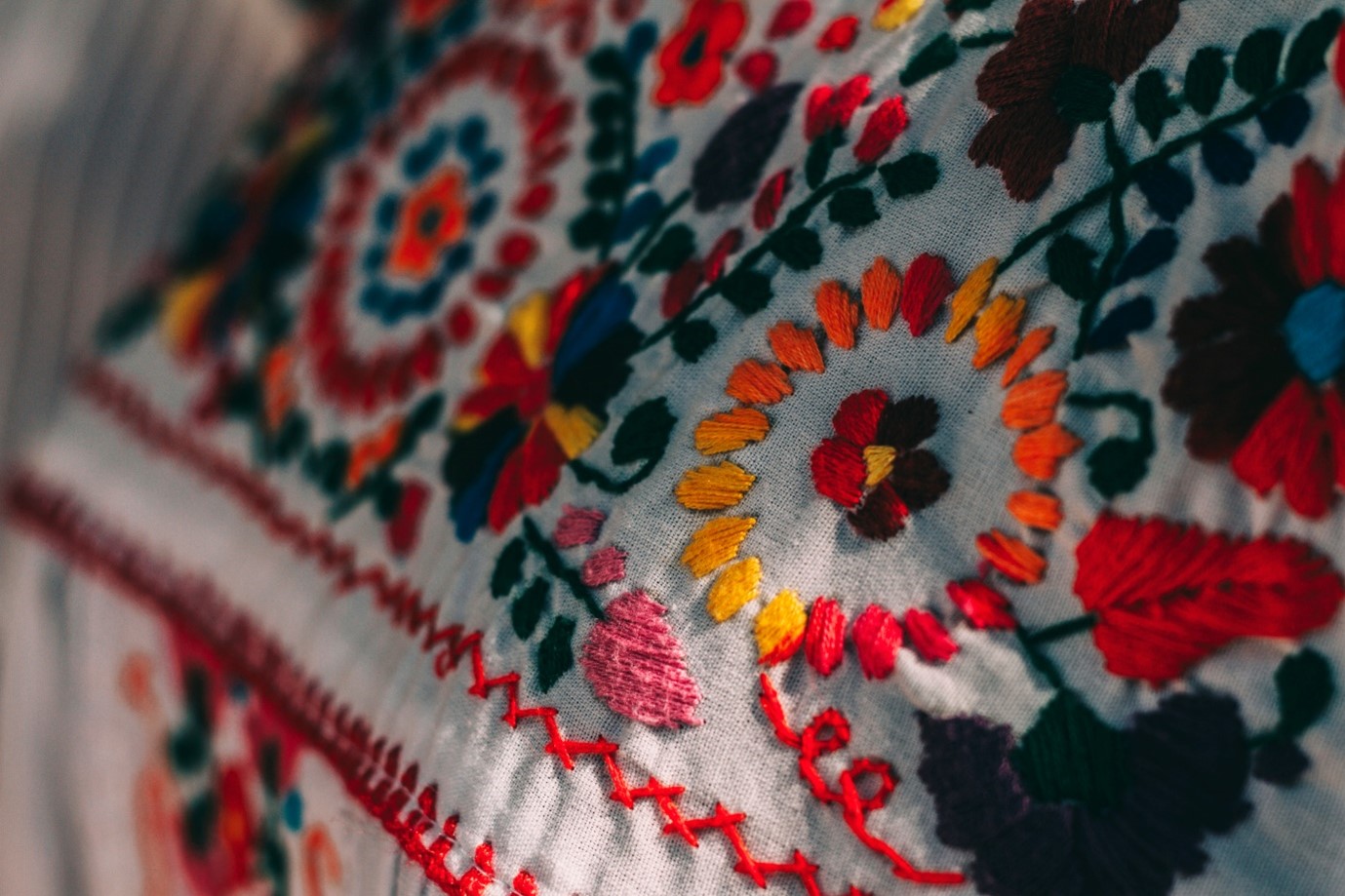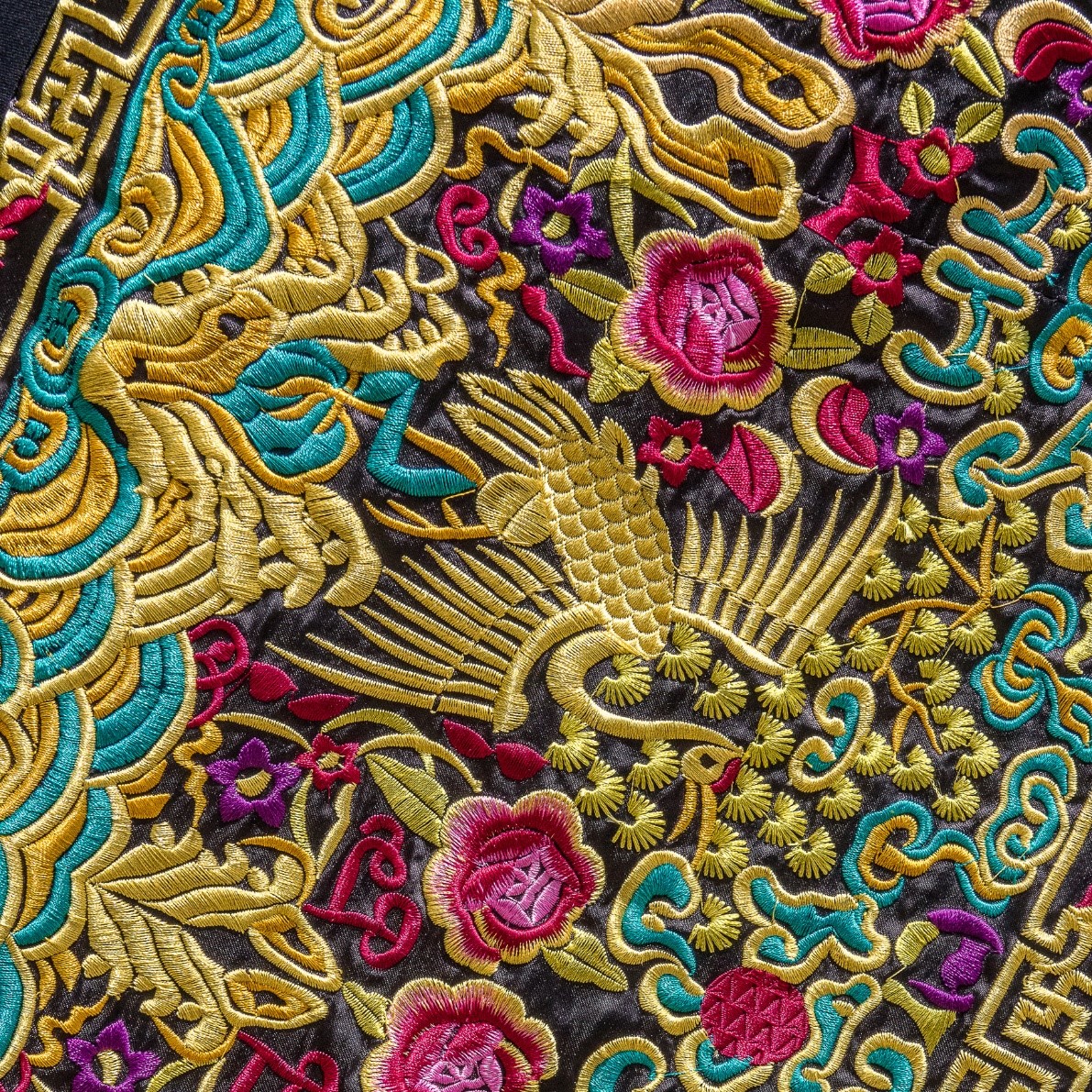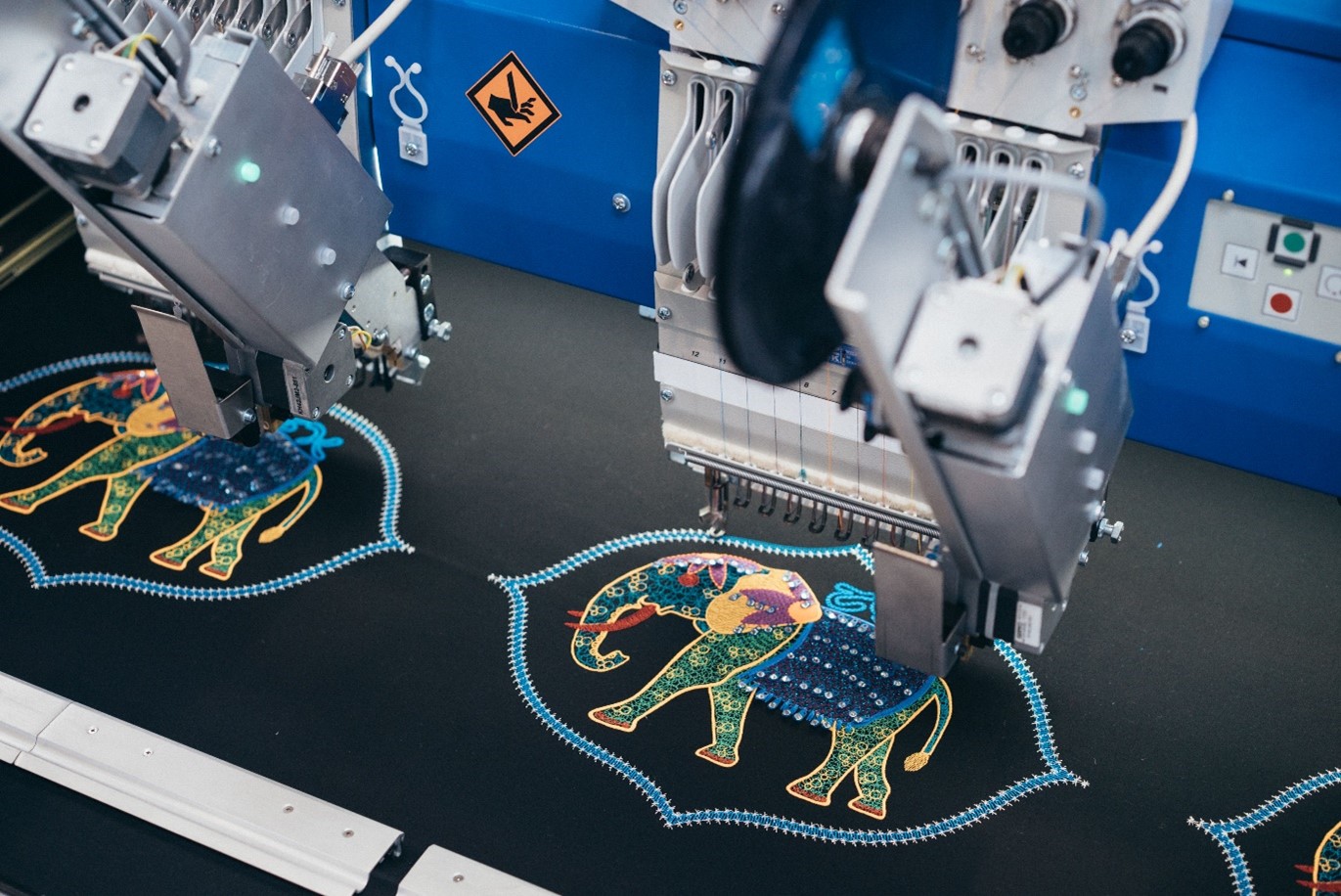A History of Embroidery and Costuming
Embroidery is the art of decorating fabrics and other materials with thread to create patterns or letters. ‘Embroidery’ comes from the French word broderie, meaning embellishment, which is essentially what you are doing to a piece of fabric when embroidery is added.
Embroidery has existed for thousands of years and can be traced back to 30,000 B.C, with finds from this period revealing fossilised remains of hand-stitched and decorative clothing. Early examples of embroidery can be found in China between the 5th and 3rd Century. The practice can also be found referenced in the Bible and Greek mythology.
The art of embroidery has a rich and long history, so today we’re taking a look at how it began and where it is now.

Embroidery in Ancient China
Embroidery in China began in the Neolithic age, with some ancient vestiges of silk production being found in Neolithic sites dating back 5,000 to 6,000 years in China. The earliest found example was a silk embroidery discovered in a tomb in Mashan in Hubei province identified as being from the Zhanguo period, between 5th to 3rd centuries B.C.
China was the first country to weave silk, and this gave rise to the practise of embroidery. It is said that the Empress His-Ling Lo-Tsu discovered silk when a silk cocoon fell into her teacup while sitting in the shade of a mulberry tree. Due to silk’s high-quality, nearly all embroidery in China was made with silk.
Silk became China’s most valuable commodity and silk embroidery became so widespread that by the 5th Century, more than a quarter of the Chinese population were employed in producing it. The different provinces became renowned for their own styles of embroidery. This includes Suzhou, Sichuan, Hunan and Guangdong. Suzhou, in particular, rose to prominence due to its intricate and precise methods. Today, this unique style is known as Su embroidery.
Suzhou is still the world’s centre for silk embroidery using the same technique that has been mastered over the centuries. China produces over 54% of the world’s silk and leads the world in silk embroidery production.

Embroidery in Europe
By the 12th Century, embroidered silk was being used for robes and was making its way to the rulers of India and Persia, and then on to Italy and France. There’s a reason this trade route from East to West was known as the Silk Road. During the second crusade, European knights brought back people from the Byzantine Empire who knew how to make silk and embroider.
Embroidery made its way to Italy, specifically Venice, Sicily and Florence. These places soon became famous not just for silk production but for other fabrics like velvet, damask and satin. The church benefitted from these luxury materials in the form of embroidered garments worn by the clergy, embroidered hangings and even embroidery for bibles.
Monarchs were also a significant customer for embroidery, and designers would be employed by a monarch or noble household to embellish garments, furnishings and decorations. One example is craftsman Charles Germain de Saint-Aubin, who was employed by French king Louis XV.
Embroidery spread from Italy to France and then to England, Germany, Bavaria and Norway where it was used for wedding garments and needlework.
Embroidery From the 15th Century Onwards
Techniques for embroidery began to change due to the practices of European embroidery workshops. In the 1400s, Italian designers produced luxury silk and velvet fabrics and imported them to England in large amounts. The work was being adapted to require simpler techniques so they could be made more quickly and applied to the Italian cloths. This began to include techniques like embroidering motifs on linen that was then cut out and stitched onto the finer materials.
The patterns and styles used in embroidery tend to reflect the fashions of the time, and designers found little difficulty in producing the new styles influenced by the Renaissance. But the professionals had growing competition from the large number of people getting into amateur needlework, with domestic embroidery spreading to include the likes of table carpets, cushions, handkerchiefs, bags, shoes and aprons.
By the 19th Century, there was a revival for church embroidery due to the designs of William Morris. He advocated for the use of traditional embroidery stitches, and his influence meant that a number of institutions promoting embroidery were established. This includes the Royal School of Art Needlework, a training school for students in the art of embroidery.
The introduction of the embroidery machine and mass production in the Industrial Revolution helped it become more widespread, no longer a pastime for the upper class, as it could be done on cheaper materials.

Modern Day Embroidery
Today, much of the embroidery you find on products would have been stitched with a computerised embroidery machine that uses patterns from computer software. These machines are commonly used in branding and uniform adornment, as well as in the fashion industry.
The machines are designed to produce, quick, consistent results and can perform multiple types of embroidery such as link stitch. These kinds of machines are frequently used in factories but also for home businesses.
At Stocks, we supply a wide range of embroidery machines for commercial and industrial use. We are the sole UK distributor for ZSK industrial embroidery machines and the leading UK supplier for Brother commercial embroidery machines. Contact us today to find out more.
